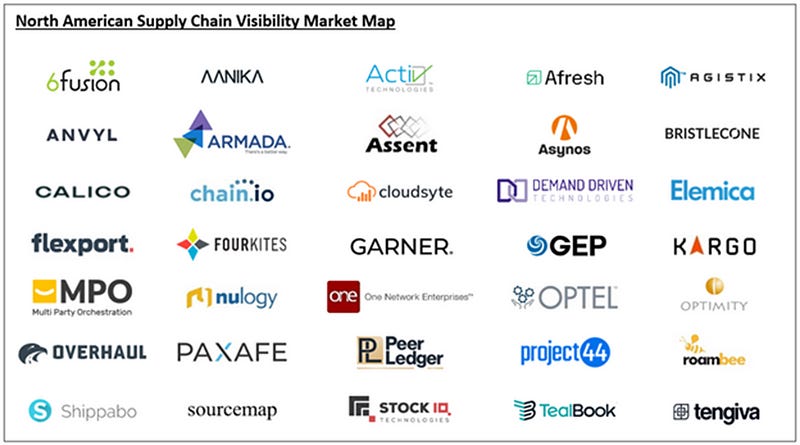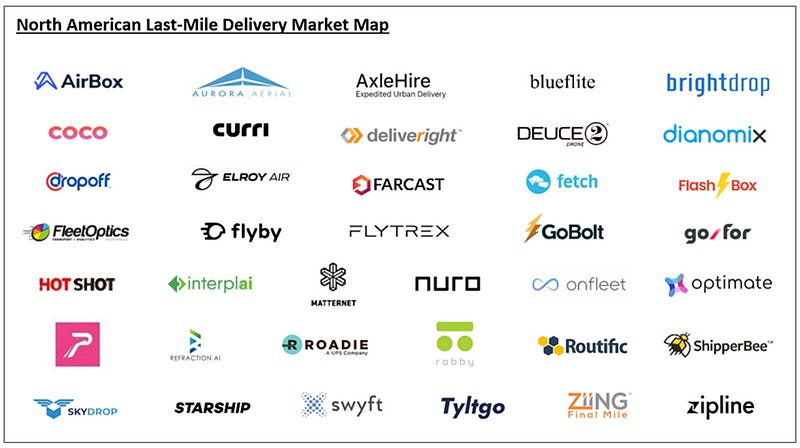Exploring Trends in Supply Chain & Logistics
The transportation industry is a vital component of the global economy, where the movement of goods and people is necessary to create…
The transportation industry is a vital component of the global economy, where the movement of goods and people is necessary to create economic opportunities and societal progress. With the transportation industry comprising 5% to 8% of GDP in Canada, the reliability and efficiency of the transportation infrastructure can have positive multiplier effects on long-term economic growth.
One area that has received mainstream attention recently is supply chain and logistics. When the COVID-19 crisis caused factory shutdowns in China, government lockdowns of countries, and global labour shortages, it exposed the underlying inefficiencies in our supply chains as witnessed by empty shelves at retailers, automotive and furniture delivery delays, and increased prices for goods. Plus, when you couple demand-side factors such as the surge in e-commerce sales with increasing consumer demand for faster shipment times, it’s a recipe for significant supply chain disruption. These dynamics have attracted significant private equity investment with $50.6Bn invested globally in logistics in 2021, which is 3x the amount invested in 2020.
At Maverix Private Equity (“Maverix”), we’ve commenced research into emerging trends within supply chain and logistics to better understand “where the puck is going” and to surface potential investment opportunities. We believe that the complexity of the supply chain itself, distribution challenges, and the shift to a gig economy labour force will pose challenges and opportunities over the long term. Our hypothesis is that disruption in this space will not be based solely on technology, but the business enablement created by technology and connecting the various constituencies within the supply chain, which is a key roadblock today.
In particular, Maverix is spending time in supply chain visibility and last-mile delivery. As the COVID-19 pandemic accelerated e-commerce adoption and put pressure on supply chains, numerous companies emerged in both segments. As we head into a recessionary period precipitated by rising interest rates to combat persistent inflation, we will experience a slowdown in consumer and business spending and possibly a freight recession. Unfortunately, some of these companies will not survive due to capital constraints, unprofitable business models, labour shortages, or a commoditized offering. The challenging macroeconomic backdrop will force companies to innovate. Maverix is attracted to companies that have strong management teams, positive unit economics, and a differentiated, mission-critical product offering resulting in an enhanced customer experience. Furthermore, we will prioritize companies that are not overly reliant on elevated levels of consumer spending in case we find ourselves in a period of stagflation over the medium term.
Supply Chain Visibility
The pace of digitization is increasing rapidly across industries as businesses and consumers become more connected through broadband connectivity, Internet of Things (IoT), and social media. Although supply chains are becoming more modern and tech-enabled, the pace of digitization has lagged other industries.
Supply chain management covers the entire production flow of a good from raw components, product development, manufacturing, distribution, and sale to the end consumer. For years, supply chain management was conducted manually or with spreadsheets, which was time-consuming and prone to error. Digitization, mainly through the use of software, allows companies to improve supply chain processes while increasing productivity, customer insights, and transparency. Nowadays, it also enables companies to make their supply chains more sustainable.
A digital supply chain starts with integrating demand planning, asset management, warehouse management, logistics management, and order fulfillment, but the real value comes from the data that is aggregated to help with activities such as inventory management, forecasting, and decision-making. With a digital supply chain, companies can go from reacting to predicting, which enables them to identify issues and quickly respond to disruption.
Over time, we will explore various sub-categories within supply chain digitization. For now, we’ve been researching supply chain visibility and searching for companies with innovative technologies that support it.
Many firms lack visibility and transparency into their supply chains to effectively reduce costs and enterprise risks. This comes at a time when companies are increasingly being pressured from stakeholders to provide more information about their supply chains. Even consumers are now demanding to know where their products come from (i.e., traceability), how they are made, and what materials they are comprised of, and are holding companies accountable. This is especially important in industries such as food and beverage, pharmaceuticals, and apparel. In a survey conducted by EY, supply chain executives said end-to-end visibility was the number one factor in creating a successful supply chain, but only 6% of them were very confident in their systems to achieve this. Similarly, an IBM global C-suite study showed that 84% of chief supply chain officers thought that lack of end-to-end visibility was their biggest challenge.
Visibility arms companies with data across the supply chain to identify disruptions and opportunities, and proactively manage them to reduce costs, detect compliance violations, and mitigate reputational risk. The proliferation of data sources and supporting analytics provide decision-makers greater insights into their operations. The use of artificial intelligence and machine learning is now being employed to identify these disruptions and optimize the supply chain. Greater internal visibility will enable external transparency. For example, at Patagonia, strong visibility into its supply chain enabled the company to share its practices openly with the public, which the company leverages as a differentiator and competitive advantage in the market.
We are interested in technologies that provide companies with a holistic view of their supplier base. These technologies should be able to source information from legacy systems and integrate it across the supply chain to enable better decision-making and risk management, and help companies comply with regulations and remain in good standing with their customers. Companies such as Tealbook, Nulogy, and Garner focus on different niches within the broader supply chain visibility segment and are increasingly employing artificial intelligence and machine learning to enhance their technology offerings. Tealbook offers organizations a view into their entire supplier base, which provides valuable insights into supplier performance, sustainable business practices, and regulatory compliance. Nulogy’s software offers visibility into the supply chain networks of consumer brands and their contract suppliers to manage workflows and processes, while Garner focuses on visibility into complex energy supply chains and identifies inefficiencies in those supply networks.
Last-Mile Delivery
According to eMarketer, Canadian retail e-commerce sales grew 75% in 2020 and 12% in 2021 buoyed by mandated shutdowns which further accelerated the existing trend towards online shopping. In addition, the International Trade Administration estimates that there are over 27 million e-commerce users in Canada, accounting for 72.5% of the Canadian population, and is expected to increase to 77.6% by 2025.
With surging e-commerce sales and rising consumer expectations, there’s an increasing demand for deliveries. The World Economic Forum estimates that demand for last-mile delivery is expected to grow by 78% globally by 2030 driven by rapid urbanization, expanding online customer base worldwide, wider range of products being sold online, increasing purchasing power of the middle class, and emergence of new digital business models.
Last-mile logistics refers to the final step of the delivery process when a package is delivered to its destination. In fact, this step is the most expensive and time-consuming part of the logistics process since it involves delivering numerous packages to various locations involving multiple stops, which increases the cost of the last mile. Costs can further escalate due to failed deliveries, complex routing, and merchandise returns. Per Business Insider, last-mile delivery accounts for 53% of total shipping costs!
The goal is to deliver the packages as quickly, accurately, and cost-effectively as possible, which can serve as a key differentiator for retailers. Consumers are demanding faster deliveries with positive delivery experiences. Just look at what Amazon has done with its Prime program and how it enhances customer satisfaction and builds loyalty with its customer base.
Optimizing last-mile delivery will become even more important as the volume of final deliveries increases with the growth in e-commerce. With advancements in electric and autonomous vehicles and delivery drones happening in parallel, it’s not difficult to see the next evolution of last-mile delivery to incorporate these innovative technologies, which will also benefit the environment. In addition, companies are using technologies to tap into the emerging gig economy workforce to make last-mile deliveries, whether exclusively or through a hybrid fleet model. We are researching technologies that increase the efficiencies of distribution centers, support new delivery methods, utilize telematics, support shifts in labour, and provide transparency and tracking to the end consumer.
There are several interesting companies tackling challenges within last-mile delivery. GoFor and Fleet Optics employ technology-led delivery solutions for big, bulky, and small packages, which leads to accurate, on-time deliveries and an enhanced customer experience. Dianomix and Tiny Mile have developed innovative last-mile delivery solutions using autonomous robots, while Drone Delivery Canada uses drones to make deliveries. Routific offers software that assists with route optimization, while Optimate provides software for dispatching and scheduling processes.
At Maverix, we are looking to broaden our network and deepen our understanding of emerging trends in supply chain and logistics, so please reach out to us with any comments or suggestions.






